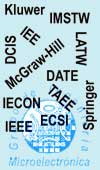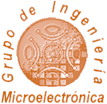
Web Map

Location

News

Santander Info

|
| GIM>Research>Publication |
| PUBLICATION |
| |
| Full record |
| Title: | Fast Instruction Cache Modeling for Approximate Timed HW/SW Co-Simulation |
| Type: | International Conference |
| Where: | 20th Great Lakes Symposium on VLSI (GLSVLSI'10), Providence, USA |
| Date: | 2010-05 |
| Authors: |
Juan Castillo
Héctor Posadas
Eugenio Villar
M. Martínez (DS2)
|
| R&D Lines: |
Design and verification of HW/SW embedded systems
|
| Projects: |
FP7 216693 MULTICUBE
|
| ISBN: | 978-1-45030012-4 |
| PDF File: |
|
| Abstract: | Approximate timed co-simulation has been proposed as a fast solution for system modeling at early design steps. This co-simulation technique allows simulating systems at speed close to functional execution, while considering timing effects. As a consequence, system performance estimations can be obtained early, allowing efficient design space exploration and system refinement. To achieve fast simulation speed, first the SW code is pre-annotated with time information and then it is natively executed, performing what is called native-based co-simulation. To obtain sufficiently accurate performance estimations, the effect of the system components must be considered. Among them, processor caches are really important, as long as they have a strong impact over the overall system performance. However, no efficient techniques for cache modeling in native-based co-simulation have been proposed. Previous works considering caches apply slow cache models based on tag search, similar to ISS based models. This solution slows down the simulation speed highly reducing the efficiency of native based co-simulations. In this paper, a high level instruction cache model is proposed, along with the required instrumentation for native simulation. This model allows the designer to obtain cache hit/miss rate estimations with simulation speeds very close to native execution. Results present a speed-up of two orders of magnitude with respect to ISS and one order of magnitude regarding previous approaches in native simulation. Miss rate estimation error remains below 5%.
Paper.
|
|
|








